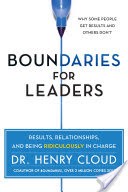No leader is immune to losses, bad quarters, bad years, bad reviews, or product failures. It is part of the game, and part of getting it right. What matters is how you learn from these challenges and use them to improve. Focus on the things that are going to drive improvement. Do not let any one loss tell you who you are or what your potential or future is.


















